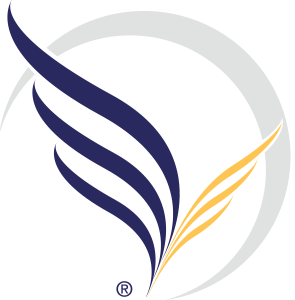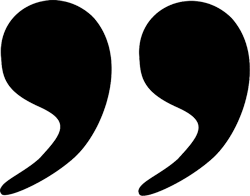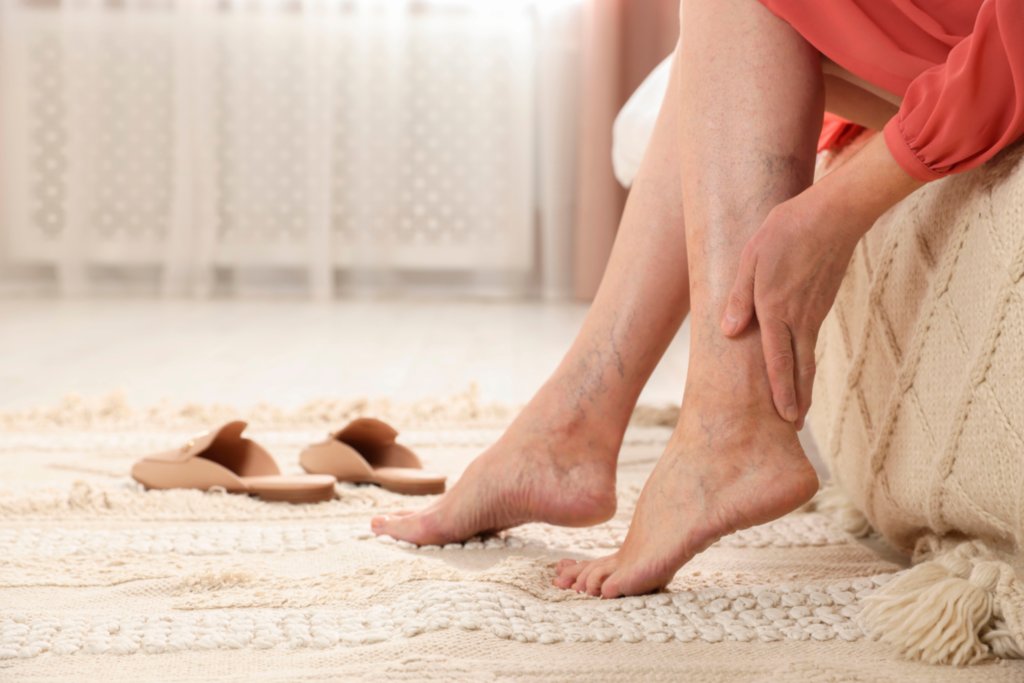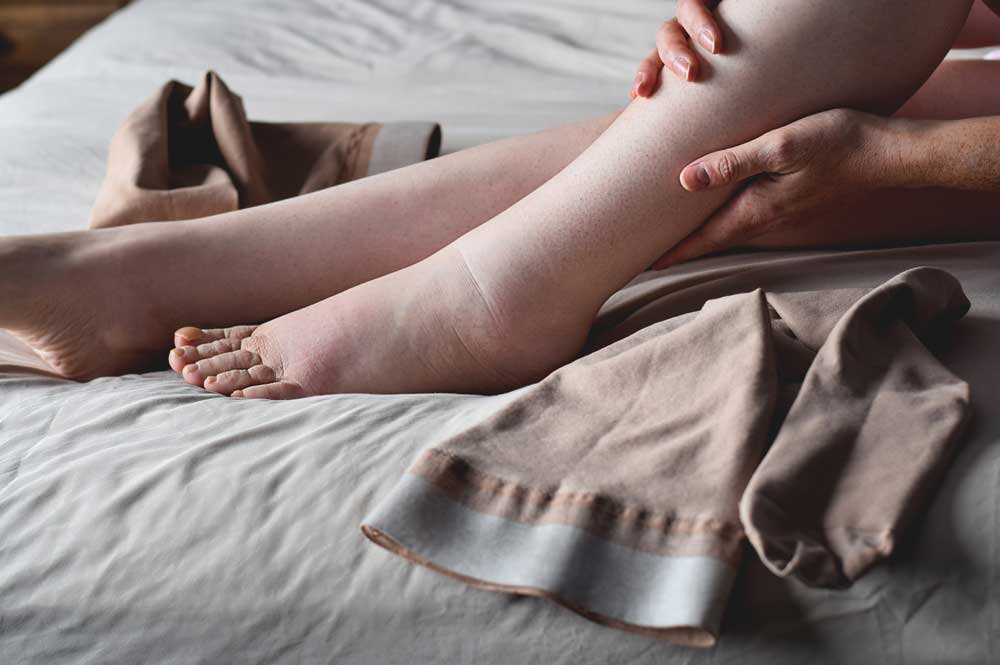Varicose veins cause pain, fatigue, swelling, itching, burning, leg cramps and discomfort, especially if you’re on your feet for long periods. One way to decrease the symptoms of varicose veins is to wear graduated compression socks.The socks work best when used as directed by your physician. They can definitely help relieve the symptoms of vein disease.
The symptoms of varicose veins occur as a result of defective one way check valve in the legs. These defective valves in the veins allow blood to pool in the legs when exposed to the forces of gravity while we sit or stand for prolonged periods. The defective valves occur as a result of multiple factors.
The number one factor is inherited tendencies followed pregnancy and hormonal changes, occupations with a lot of sitting or standing, weight gain, age, and trauma.
Compression socks reduce the blood pooling in the legs by compressing the veins –hence the name– so that the veins can’t dilate or enlarge.
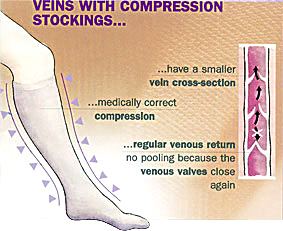
Graduated compression socks fit tighter at the ankle with the compression abating as they go up the leg and thigh. This compression keeps the venous blood flowing up the legs and prevents pooling.
The socks come in different pressures, which, like blood pressure, are expressed in millimeters of mercury, or mmHg., the higher the number the higher the compression. 20 to 30 mmHg socks require a doctor’s prescription, while socks with lower pressure are available over-the-counter. For more advanced vein disease physicians usually ordered 30 to 40 mmHg socks.
Compression socks have been associated with thick ugly compression socks like your grandmother wore. With advances in textiles new material have been developed that meet compression standards while maintaining a comfortable fashionable appeal. Socks come in many fashion colors, sheer fabrics to accommodate any style.
To be effective, you must put your compression socks on first thing in the morning, before you get up and move around. Once you get up blood begins to pool and swelling quickly appears. Putting the stockings after swelling develops can traps the extra blood in the legs, making matters worse.
Because compression socks are meant to be tight, they can be more difficult to put on, especially if you don’t have the proper size or fit. Certified fitters are trained to measure your legs and help you select the socks that best fit you and your lifestyle.
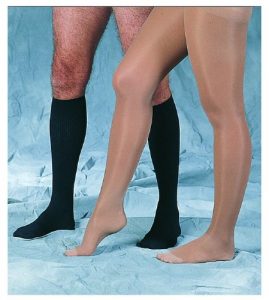 The socks come in knee high, thigh high and panty hose lengths and open toe and closed toe styles. Our certified fitters at Vein Specialists of the South can assist you in learning hose to properly done and remove your socks.
The socks come in knee high, thigh high and panty hose lengths and open toe and closed toe styles. Our certified fitters at Vein Specialists of the South can assist you in learning hose to properly done and remove your socks.
There are number of reputable brands of compression socks on market today. However, every compression sock is not created equal. It is important to choose your vendor to ensure that you spend your money of quality socks. All do stretch or lose their elasticity over time. If your socks no longer reduce your symptoms, you might need a new pair. Manufactures recommend that you replace your socks at least every six months.
Compression socks for varicose veins help control your symptoms but do not correct the underlying cause of your problem. Though important to control symptoms and to prevent progression graduated compression socks are not permanent solutions for your varicose veins. Call Dr. Harper today to request an appointment to discover your options for evaluating and treating your varicose vein disease at Veins Specialists of the South.

